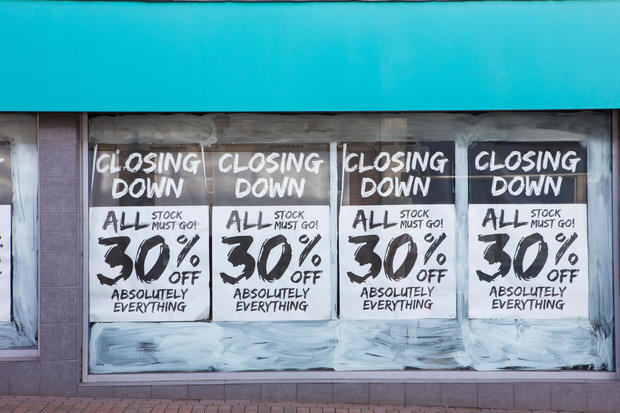Retailers struggling through their toughest year in a decade
After a subpar holiday season, U.S. brick-and-mortar retailers are off to an even more cheerless year, with 14 having already having declared bankruptcy in 2017.
Women’s clothing label Bebe is the latest casualty, announcing on Friday it would close all 175 stores and liquidate its inventory. The news followed bankruptcy filings by Payless, H.H. Gregg, BCBG Max Azria, The Limited, Wet Seal, Gander Mountain, MC Sports and Gordman’s.
Others, including Macy’s, Ralph Lauren, J. Crew, Abercrombie & Fitch, J.C. Penney, CVS and GameStop, are cutting back on locations. In perhaps the starkest sign of the historical shift away from department stores, Sears -- which traces its history to the 1880s -- warned in March that it may be forced to close.
The plight of retailers is leaving its mark on the labor market. The sector shed 60,000 jobs in February and March, and a total of 2,880 individual stores have closed so far -- more than double the number of closures for the first three months of 2016.
Department stores have been struggling for years, and analysts aren’t optimistic that will change anytime soon. A pair of recent reports estimated that between 2,000 and 8,000 additional stores would have to close to bring retail space in line with what foot traffic can support.
Mid-priced stores, which are dealing with reduced traffic, costlier rents and more consumers shopping online, are especially hurting. And with more manufacturers reaching shoppers directly -- through online media or even their own retail channels -- department stores have sometimes found themselves competing with the very brands they stock.
The real estate rebound is adding yet more pressure, as commercial real estate values push some rents -- in particular those in tony downtown districts -- beyond the reach of retailers. Add to that a gloomy tourism outlook for key shopping cities like New York and Los Angeles, and it’s no wonder that even flagship locations are shutting their doors.
It’s not that Americans are shopping less. Since the economic recovery, spending has largely rebounded and consumer sentiment is riding high. But what consumers are choosing to spend their money has shifted, and traditional retail stores are feeling the pinch.
Instead of buying items like clothing, more Americans are spending on experiences like travel or eating out, as well as on big-ticket purchases, like cars. And for many purchases, consumers are moving online. Retail giant Amazon (AMZN) had its best year in 2016. Apple’s App Store broke a sales record in December.
At least for now, employment in those other sectors -- often called “non-store retailers” -- is growing fast enough to offset most of the job losses from department stores. Amazon plans to hire 100,000 full-time employees over the next 18 months, for instance
“Some of the net job losses in bricks-and-mortar stores are being offset by net job gains at non-store retailers, couriers and warehouses,” wrote Peter Ashworth, chief U.S. economist at Capital Economics, in a research note. Whether there’s enough demand online to absorb the closures of thousands more physical stores remains to be seen.




